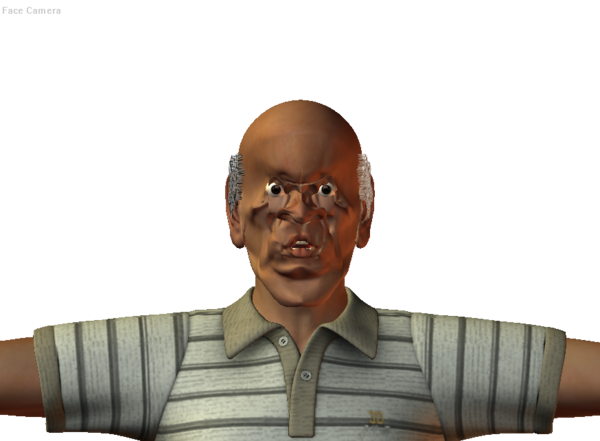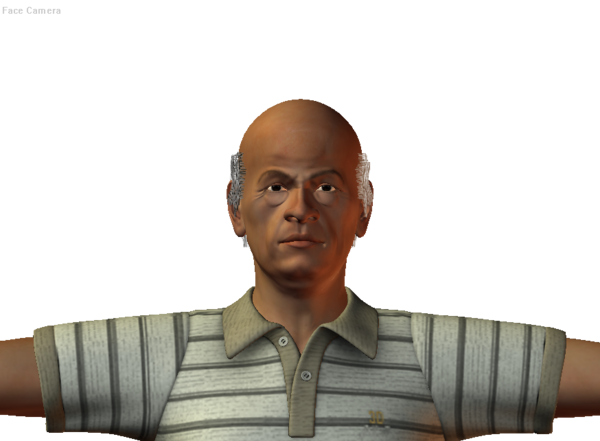Talk Designer Assistant for Poser 8 Quirkiness
 Ken OBanion
Posts: 1,447
Ken OBanion
Posts: 1,447
For anyone who uses the Talk Designer Assistant for Poser 8, I have discovered a bit of bizarre behaviour with respect to Michael 4, and I thought I'd pass it along, in hopes of sparing others the hours of hair-pulling and (probably coincidental, but you never know) chest pains that I went through before I finally figured out what I was doing wrong.
The Talk Designer Assistant (TDA from now on, because it's such a pain in the never-mind-precisely-where to type it out every time) needs to perform a few added steps when it tries to animate Michael 4 (and probably Victoria 4, too, but I haven't tried her yet); these extra operations are located in the TDA's Edit menu, under the 'DAZ M4/V4' option. The video tutorial that came with the product explains how (and more importantly, why) to do this, so I won't rehash the procedure here.
The issue arises when you attempt to animate speech for a heavily-morphed M4/V4 head. In such a situation, I have learned (the hard way, naturally) that 'Timing is Everything'. Here's what I ended up having to do....
Load Michael (or Victoria) 4, then load the relevant morphs. (The Base morphs, for the visemes, and in my situation, the 'Aged for M4' morphs. I also added the Morphs++ package because, hey, why the hell not?)
If you want the character to blink while speaking -- and you really should, because if you don't, the end result is just a little creepy -- create that morph now. (Set 'EyesOpen-Close' to -1, then 'Spawn Morph Target' in Poser's Object menu; be sure to name it 'Blink', or the Talk Designer won't find it. You'll find the spawned morph under 'Morphs'.)
Start the TDA. Go through the 'Read Morphs' operation, and you will find that - What the...? - there are none. This is where you perform the special steps for M4/V4 (Edit->DAZ M4/V4->Step 1 ('Create new morphs', according to the status line). Click the 'Read Morphs' button again, and the window will display all of the newly-created morphs for the figure's visemes. Now click 'Assist' to save out the viseme map.
Here is where that 'Timing is Everything' bit comes into play. At this point, apply the head and body morphs that make your character, well, your character. In other words, spin those parameter dials.
Once you have your character the way you want him or her, start the Poser Talk Designer. Set up your parameter values (sound file, supplemental text, and the figure's viseme map that the TDA just created for you, blink rate, expressions, and such). Click 'Apply', and you'll see the frame count jump from 30 (the default) to however long the animated sequence will end up being, given the length of the audio file.
Test the animation using the scrubber. Or, what the hey, play it a couple of times. If anything isn't right, believe me, you'll know almost instantly!
Now you can perform the TDA's M4/V4 'Step 2', and this can take a while. (This step animates the figure's lower jaw and tongue to produce realistic mouth movements.)
What I learned from this was that if you don't do things in exactly this order -- that is, wait until the viseme morphs are created before applying the character-forming morphs, your figure (see the first image) will, once it begins to speak, look like the second image. (Kind of conjures up that scene from Raiders of the Lost Ark, doesn't it!?)
The reason for this intolerable behaviour? Blame Poser, not the TDA. When morph targets are spawned, the 'Spawn...' function includes any and all parameters that are non-zero into that morph. So unless you start with a completely zeroed-out figure, your Talk-Designer-generated animation sequences are liable to get pretty freaky!
Hope this helps somebody. And if you already know about this..., well, you have my sympathy; I know what you went through!





